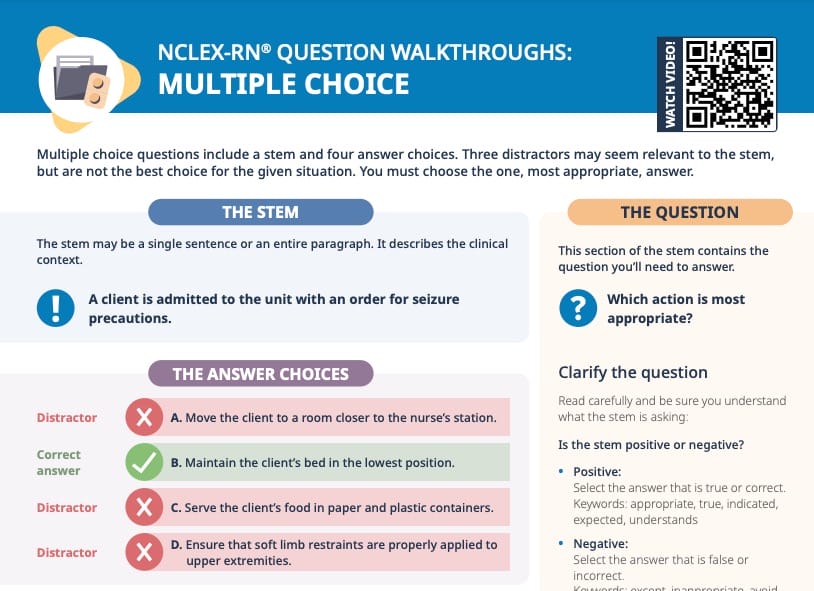Understand the question stem and recall what you know
Questions that ask to evaluate the effectiveness of treatment of a condition are relatively common on the NCLEX. They require you to understand how the condition affects a patient, as well as how exactly the treatment works to address the condition.
Effects of human immunodeficiency virus infection
HIV is a virus that attacks the body’s immune system. A client who is diagnosed with HIV+ means the virus is present in the bloodstream. AIDS (acquired immunodeficiency syndrome) is the set of symptoms and illnesses that comes with the progression of an HIV infection as it weakens the immune system (low CD4 T cell count), making it susceptible to opportunistic infections.
Treatment goals of antiretroviral therapy
ART treatment can reduce the level of HIV in the body to such low levels that blood tests cannot detect it. Goals that ART leads to:
- Prevention of transmission
- Prevention of progression of HIV infection to AIDS
Go through the answer options and eliminate the ones you are sure are incorrect
Tip: Use your scratch paper to note down your thoughts about each answer choice!
When you go through the answer choices in your first pass, eliminate the ones you are immediately sure are incorrect, and leave in the ones you are unsure about or find plausible to compare in more detail later.
A. High viral load count
Having a high viral load means there is a lot of HIV in the client’s bloodstream. That is not a sign of effective ART. The goal of ART is to keep viral load counts low, and that is what is expected to happen if it is taken consistently. This answer can be eliminated.
B. Healthy immune system
A healthy immune system sounds like a good goal for treatment, so let’s keep it for now.
C. Low CD4 T cell count
A low CD4 T cell count is never something a treatment would try to achieve, because it means the immune system is weak. This finding would indicate the client is progressing towards AIDS, which successful ART treatment is working against. This answer can be eliminated.
D. Drug resistance
ART has to be taken very consistently to be effective. If a client is not taking the medication consistently and regularly, they can develop drug resistance, making the drug less effective. That would be detrimental to successful ART, and if the client does adhere to the prescribed medication intervals, this would not be an expected outcome. This answer can be eliminated
Look at the answer(s) you did not eliminate
Answer B, “Healthy immune system”, is the only answer we did not eliminate already, so is left over as our correct answer. Even though it obviously does correspond to the goals of ART treatment, picking this as correct at first glance would be difficult, since it is very vague. The elimination process is the safest way to arrive at this answer as being the only one that can be correct.
This is why it is so important you make sure to rationalize why you are eliminating answer choices. If you have a good reason for each one, you can be confident that the one left over is correct, even if it sounds vague.
Inside tip
When taking the NCLEX, it is very likely that you might not agree with something. The correct answer might not be phrased how you would phrase it if you were to come up with a good answer to the question yourself. The point is: When you’re in test-taking mode, don’t waste time getting held up over things you disagree with. Focus on how you can get the best outcome for yourself on the exam.

